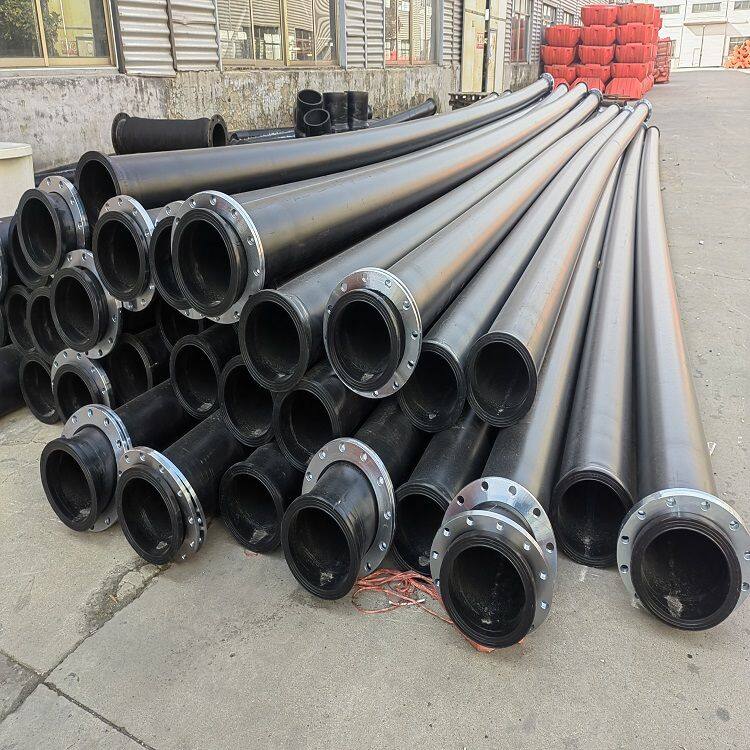Products Description
Wear-resistant straight HDPE Pipe is a high-strength, high-density pipeline material with excellent mechanical properties and chemical corrosion resistance, and a long service life. However, during use, due to various reasons, there may be obstacles inside the pipeline that affect the smooth flow of liquid, and dredging is necessary in this case.
During the dredging process, it is necessary to consider whether there is significant pressure inside the pipeline. Under low pressure conditions, dredging is generally carried out using mechanized cleaning methods, such as water guns and cleaning equipment, using conventional cleaning solutions. In this case, cleaning can be very smooth and will not cause any damage to the pipeline material.
Dredging under high pressure requires a more cautious approach. In this case, we usually use high-pressure water guns for cleaning, using high-pressure water flow to forcefully impact the accumulated aggregates in the pipeline, causing them to be dispersed and removed. Due to the high water flow intensity of high-pressure water guns, it is necessary to consider the pressure bearing capacity of pipelines to ensure that they will not rupture due to excessive water pressure. At the same time, we need to choose professional high-pressure water guns and cleaning solutions to ensure the cleaning effect.
For Wear-resistant straight HDPE Pipe, special attention should be paid to avoiding scratches or dents on the pipeline wall during dredging, which can affect the service life and sealing of the pipeline. Therefore, when dredging under high pressure, it is necessary to ensure that the pH value of the cleaning solution is close to the inner wall of the HDPE pipeline to avoid corrosion. Before dredging, it is necessary to thoroughly inspect the pipeline to ensure that there are no foreign objects or damage inside the pipeline, in order to avoid greater damage during the cleaning process.
Firstly, when using low-intensity pressure for dredging, special attention should be paid to the softness and hardness of the water pipes. If the pipe material is too soft, it may cause the surface of the pipeline to be compressed and break, or damage may occur at the bend. In addition, it is advisable to avoid situations where water pipes are bent as much as possible, as the increased friction at the bend may cause deformation or aging of the pipes, and in severe cases, even damage to the pipes.
Secondly, when using high-intensity pressure for dredging, special attention should be paid to the pressure resistance of the water pipes. If the water pipes cannot withstand high-intensity pressure, it may lead to pipeline rupture or damage, resulting in unpredictable economic losses to the project. Therefore, when carrying out high-intensity pressure dredging, it is necessary to strictly follow the prescribed pressure values and avoid overpressure operations as much as possible. At the same time, when using high-pressure water guns for dredging, special attention should be paid to whether the nozzle of the high-pressure water gun is normal, in order to avoid situations where the water gun hurts people or the dredging effect is poor.
Finally, whether using low-intensity pressure or high-intensity pressure for dredging, attention should be paid to the safety of operators. During dredging, operators must wear necessary protective equipment such as safety helmets and goggles to avoid damage from water pipe bursts or water gun blowback.










